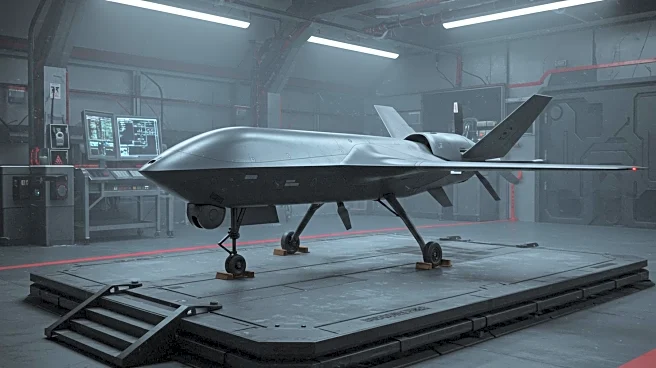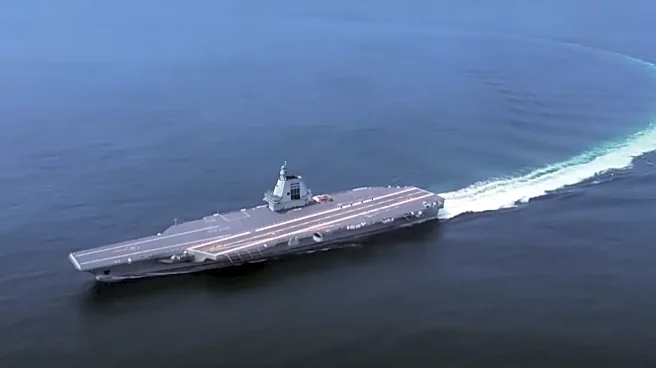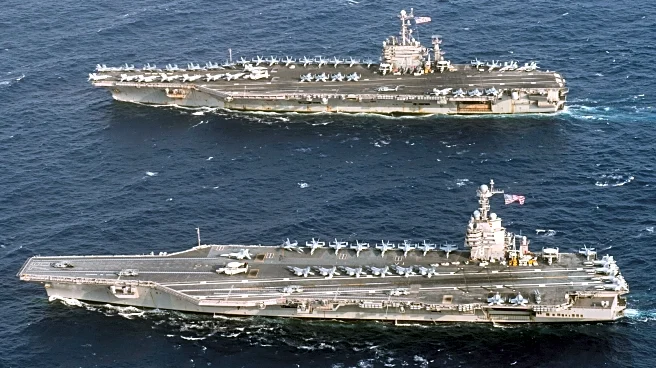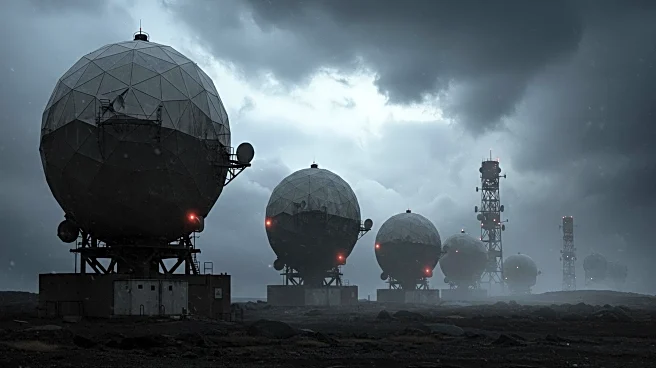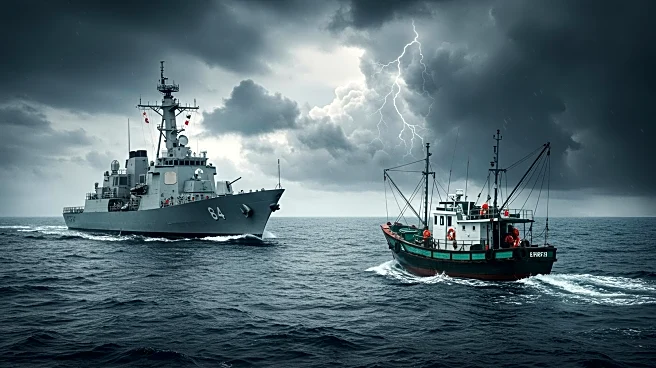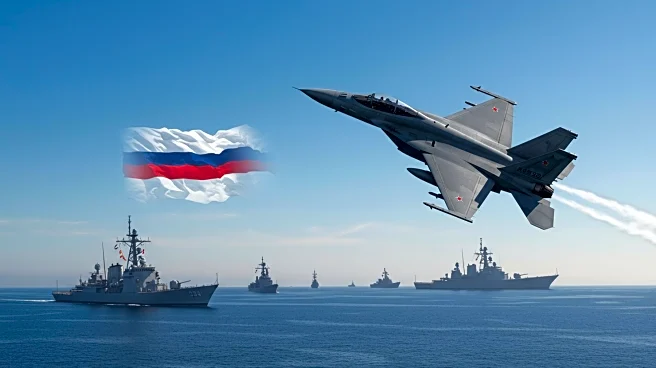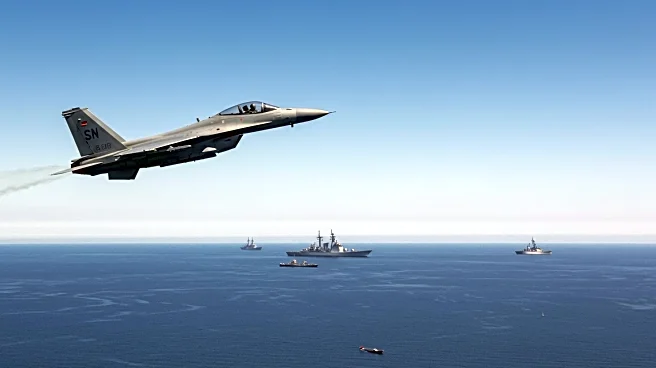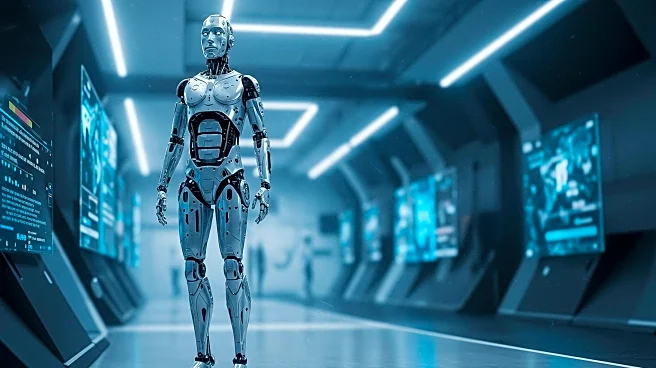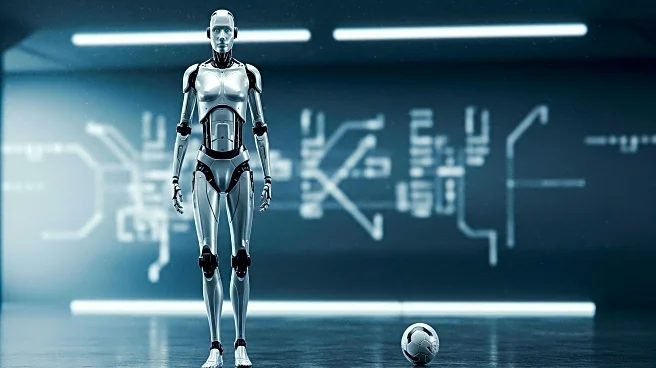What's Happening?
China is preparing to showcase a range of new air combat drones at an upcoming military parade in Beijing. The parade will feature at least five different 'loyal wingman' drones, also known as Collaborative Combat Aircraft (CCA), which are expected to demonstrate enhanced autonomy and collaborative capabilities. Among the drones to be displayed is the GJ-11 Sharp Sword stealthy flying-wing drone, a significant development in China's uncrewed combat air vehicle (UCAV) program. Satellite imagery has revealed preparations for the parade, indicating the presence of drones resembling the FH-97, inspired by the U.S. XQ-58A Valkyrie. The parade will also include other advanced military technologies, such as new missile designs and uncrewed underwater vehicles.
Why It's Important?
The unveiling of these drones signifies China's growing capabilities in uncrewed aviation and its pursuit of advanced military technology. The development of CCAs and UCAVs reflects China's strategic focus on modernizing its military forces and expanding its power projection capabilities. This move could impact global military dynamics, particularly in regions like the South China Sea and Taiwan, where China has territorial interests. The parade serves as a platform for China to demonstrate its technological advancements and military prowess, potentially influencing geopolitical relations and defense strategies worldwide.
What's Next?
The parade, scheduled for September 3, will mark the 80th anniversary of China's victory over Japan in World War II. It is expected to feature a variety of new combat capabilities, including vertical takeoff and landing drones and advanced missile systems. Observers will be watching closely to assess the operational readiness of these technologies and their implications for China's military strategy. The event may prompt reactions from other nations, particularly those with vested interests in the Asia-Pacific region.
Beyond the Headlines
China's focus on uncrewed systems highlights a shift towards more autonomous and technologically sophisticated military operations. This trend raises ethical and strategic questions about the role of AI and automation in warfare. The development of drones with collaborative capabilities suggests a future where human and machine interactions in combat scenarios become increasingly complex, potentially altering traditional military doctrines.
